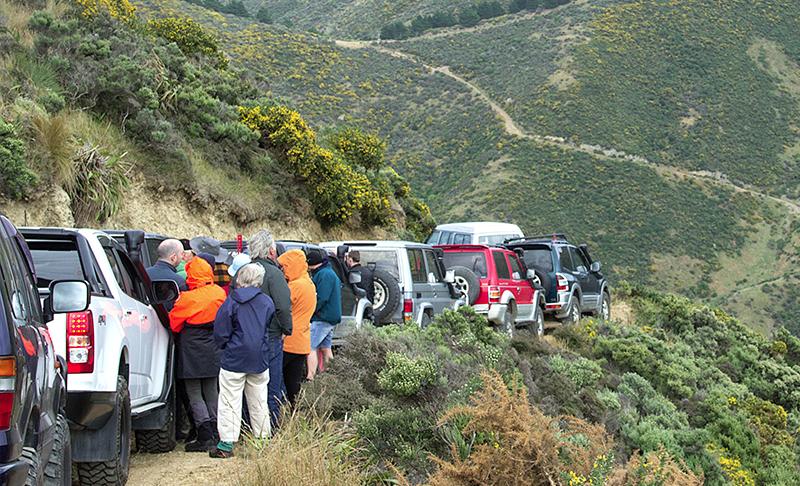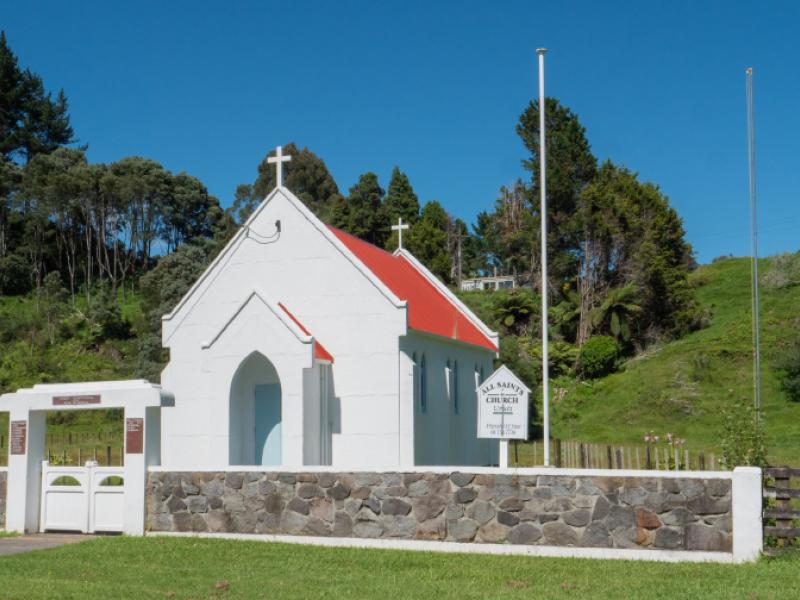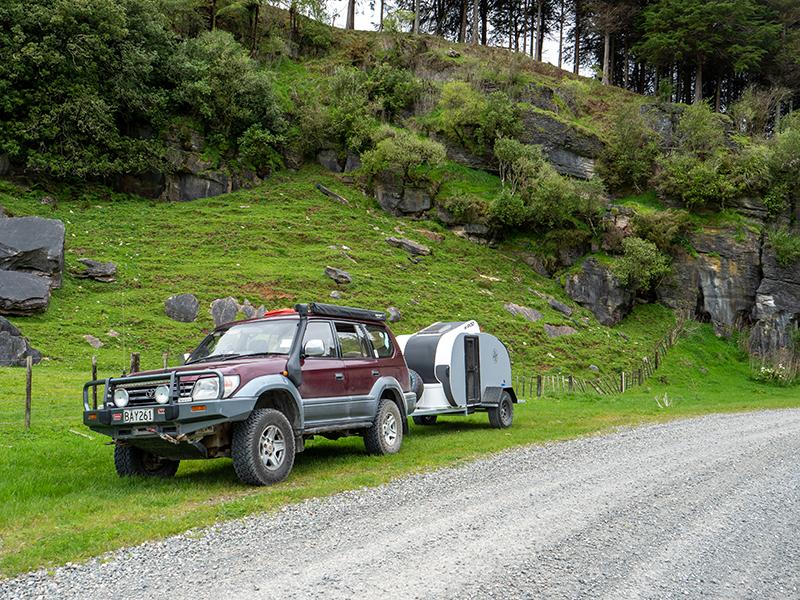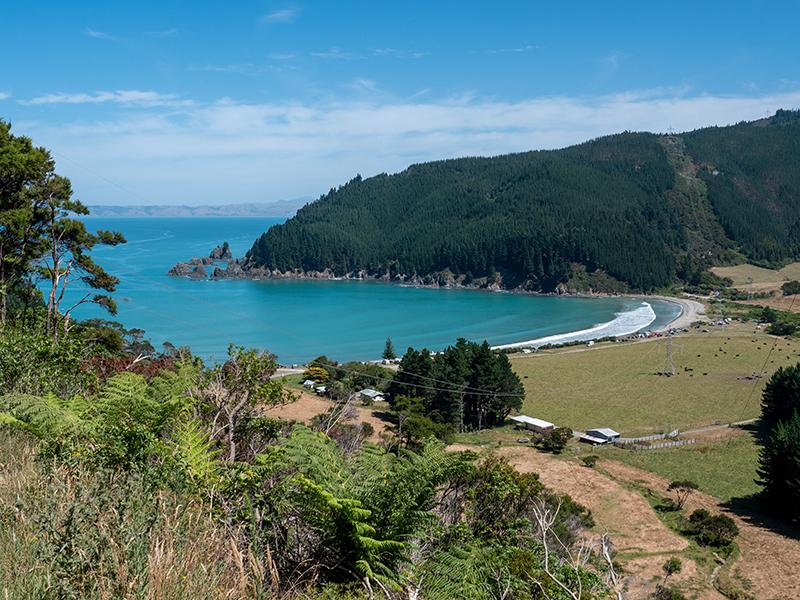Each summer David Coxon’s 4WD club supports a number of council and club activities by leading trips and providing seats for members of the public.
I always try to take part in these activities since, as well as supporting the club in enhancing our relationship with various councils and other agencies, I am getting the pleasure of visiting areas I don’t often get to, in the company of people for whom the whole 4WD experience is often an adventure.
Belmont Hills Sunset Trip
The Greater Wellington Regional Council ran two sunset trips this year, with about thirty people on each. The trips were a short ramble through the Belmont Regional Park, which is normally a walkers-only park, before heading to the Belmont trig, hopefully in time for the actual sunset.
This year, for the first time, we started at a parking area at the northern end of the park, with the first section being a steep but well-maintained power line track from the main road up to the main ridge. Near the top we joined the walking track that takes an even steeper route up from the car park, and the road faded out to a marked track across grassy paddocks climbing to the aptly-named Boulder Hill. This is a high point on the ridge that is scattered with large boulders, making an interesting foreground for the panoramic views across the Hutt Valley, and a good place for our first stop and leg stretch.
With everyone back into the right vehicles, it was then a short and scenic run with some interesting driving as we followed the narrow walking track across the paddocks to access a formed road and head through the park.
One of the many old Second World War ammunition bunkers set into the hills was an opportunity for another stop and a quick talk on the history of the bunkers and the challenges of preserving at least some of them.
We then followed formed roads south through the park to connect into the Old Coach Road, a now disused part of the original Wellington Regional road network. We exited the park for a few hundred metres before another gate gave us access to the formed road up to the trig station at the southern high point of the park. With perfect timing on both occasions, we got to the trig just as the sun set, giving us a double score of amazing sunsets.
By the time we got back to the cars it was almost dark so, despite the enthusiasm of the drivers for a night drive through the park, the return trip to the parking area was via the Hutt motorway.
Te Kopahou Reserve
Te Kopahou Reserve is in the hills above Sinclair Head on Wellington’s South Coast. This very steep and hilly terrain has a network of good 4WD tracks looping between the hills and the valleys, with enough challenge to make for interesting driving, and some superb views across Wellington and out over Cook Strait.
Unfortunately for us 4WDers, the narrow tracks with some very long, steep drop-offs in places mean that the area is normally restricted to walking use only, and only available to us by very special arrangement.
There were two trips this year, one for the Botanical Society and on run by the Wellington council, and I was involved with the Botanical Society trip. The Botanical Society members were mainly older people who arrived fully equipped with heavy-duty tramping gear, hiking poles and back packs. They were obviously very fit and used to walking long distances over rough terrain in search of rare plants.
This time, my passengers enjoyed the ease of being ferried from one rare plant site to another while spotting and discussing an amazing variety of plants seen on the side of the track. I was soon lost in a maze of Latin plant names. At each of the sites us less botanical drivers had a very pleasant break to enjoy the views and the sense of remoteness from the bustle of Wellington, while the BotSoc members roamed the hillsides looking for that elusive plant.
The day ended with the BotSoc hosting a very welcome afternoon tea at a local café for the drivers. It was much appreciated.
Orongorongo Coast
This trip was organised by the council to take members of the public over private farmland from the Wainuiomata coast to Ocean Beach on the Wairarapa coast. The trip started with a short run from the coast road across some paddocks with a short, steep climb onto the main farm track leading to the airstrip overlooking the Wainuiomata River valley. We stopped at the airstrip for everyone to enjoy the view in clear and not particularly windy conditions.
Moving on we continued climbing up the ridge, with my passengers being amazed by the views and impressed at the ease with which the vehicles were handling what seemed to them to be almost impossible terrain.
After another scenic break at a high point on the ridge, we dropped down the other side of the ridge on some narrow and steep tracks, often with nearly sheer drop-offs, finally reaching the Orongorongo River and a well-earned coffee break.
Part two of the trip started by crossing the Orongorongo River, a new experience for some passengers, before a scenic but less adrenalin-inducing run around the coast. We had planned to take a side track that threaded its way through the coastal boulders to a seal haul-out, but were thwarted by DOC's newly installed bollards – on a track that could only be accessed through a locked gate on private property!
The bollards made even less sense given the track is also part of a national cycle trail with cyclists and walkers not being stopped by the bollards.
After lunch at the Stony Creek DOC Campsite the return trip was an easy and familiar run, apart from an easy recovery when one driver tried to give his passengers a thrill by going through a water-filled hole, and got stuck. We took a final run up the Orongorongo Valley before afternoon tea, and returned down the river bed to end a fun-filled day.
To read every story in the May 2018 issue of NZ4WD go to Zinio.com (April 13) or purchase your own hard copy at the Adrenalin store.






